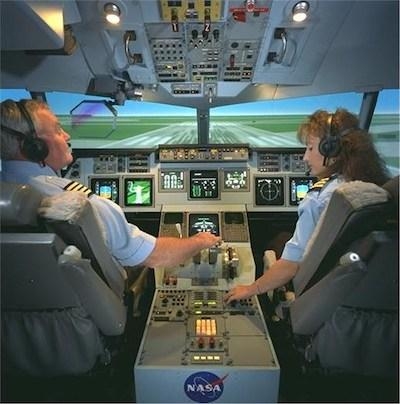Annual Growth Rate Projected To Be More Than Five Percent
The flight simulator market is projected to grow from $5.7 billion in 2019 to $7.7 billion by 2025, at a CAGR of 5.2% from 2019 to 2025. Flight simulators have been witnessing a growing demand due to characteristics, such as reliability and provision of safe flight operations. Acceptance of virtual training to ensure aviation safety, such as risk associated with the life of the pilot and aircraft is also supporting the demand for flight simulators. There is a rising demand for simulators for UAVs, and the possible use of simulation for air accident investigation is expected to further propel the growth of the flight simulator market over the forecast period.

Based on platform, the Unmanned Ariel Vehicles (UAVs) segment is projected to grow at the highest Compound Annual Growth Rate (CAGR) during the forecast period. Increasing demand for drone simulators for drone pilots and operator training is a factor driving the growth of the market for flight simulators for UAVs. The demand for drone operators is high due to the increasing number of UAV deliveries across the globe. To facilitate the training of drone operators, the demand for drone simulators is rising all over the world. Therefore, the growth of the UAV platform is projected to drive the growth of the flight simulator market during the forecast period.
Based on type, the Flight Training Devices (FTD) segment is projected to grow at the highest CAGR followed by Full Mission Simulators (FMS) and Fixed Base Simulators (FBS). Simulation of a realistic flight atmosphere during training through the flight mission system is expected to lead to a rise in the demand for this segment. Need to train pilots to support aircrews and cadet pilots and provide knowledge about cockpit layouts and aircraft features is projected to fuel the growth of the flight training devices segment.
Asia Pacific is projected to lead the flight simulator market during the forecast period. Growth is majorly driven by the growing demand for new aircraft deliveries and increasing air traffic in this region, which is projected to boost the global flight simulator market. The growth of the aviation industry is also attributed to the increase in trade & tourism, as well as the increasing disposable income of the middle-class population in emerging economies, such as India and China.
The flight simulator market is gaining traction over the past few years due to the presence of a large number of established companies as well as start-ups. Some of the major players in the flight simulator market in North America include Boeing Company (US), CAE (Canada), Collins Aerospace (US), ELITE Simulation Solutions (US), FlightSafety International (US), Frasca International (US), Indra Sistemas (Spain), L-3 Communications (US), Precision Flight Controls (US), Raytheon Company (US), SIMCOM Aviation Training (US), and TRU Simulation + Training (US). Whereas, in Europe, Airbus Group (Netherlands), Avion Group (Netherlands), and Thales Group (France), are some of the leading companies.
(Image provided with ASDReports news release)
 Aero-News: Quote of the Day (04.28.25)
Aero-News: Quote of the Day (04.28.25) ANN's Daily Aero-Term (04.28.25): Decision Altitude (DA)
ANN's Daily Aero-Term (04.28.25): Decision Altitude (DA) ANN's Daily Aero-Linx (04.28.25)
ANN's Daily Aero-Linx (04.28.25) Airborne-Flight Training 04.24.25: GA Refocused, Seminole/Epic, WestJet v TFWP
Airborne-Flight Training 04.24.25: GA Refocused, Seminole/Epic, WestJet v TFWP Aero-News: Quote of the Day (04.29.25)
Aero-News: Quote of the Day (04.29.25)



